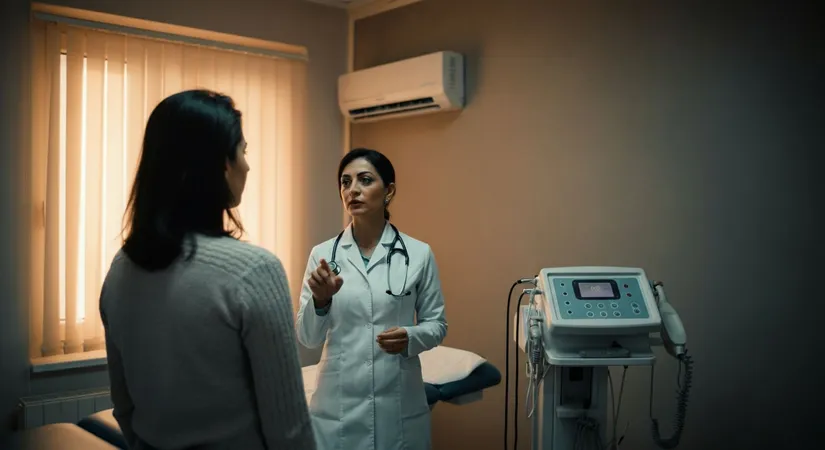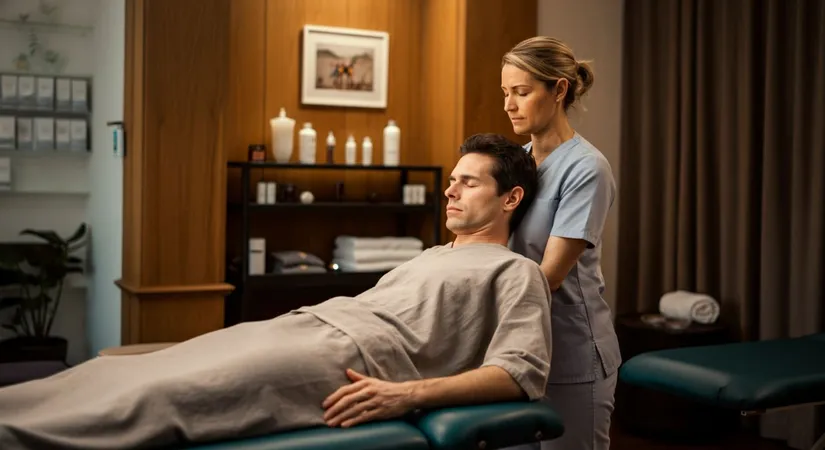Pressure Points: Unlocking the Secrets of Acupressure Therapy
Explore the therapeutic power of pressure points in acupressure therapy to relieve pain and stress effectively.
Pressure points hold a mystical appeal in both traditional medicine and modern wellness circles. Historically rooted in practices such as acupuncture and massage, understanding pressure points is more than a gateway to pain relief—it offers a holistic approach to healing.
The popularity of acupressure therapy has grown, attracting those who seek alternative methods of wellness and relaxation. With roots in ancient Chinese medicine, pressure points are believed to be key conduits in your body's energetic communication. Unraveling their secrets could unlock new pathways to improved health and stress reduction.
This guide will navigate you through the essentials of pressure point therapy, how to effectively use it for pain relief, and uncover the pressure points most beneficial for stress reduction.
Let’s delve into this captivating domain and explore how you can harness the power of pressure points to enhance your well-being.
Exploring the Historical Roots of Pressure Points
The Ancient Origins of Pressure Points
Pressure points have a rich history, deeply embedded in Traditional Chinese Medicine (TCM). These points, known as "acupoints," are believed to be gateways to the body's energy pathways, or meridians. The concept of Qi, or life energy, flowing through these meridians is central to TCM. For example, the Hegu point, located between the thumb and index finger, is traditionally used to relieve headaches and stress.Key Historical Practices Involving Pressure Points
- Acupuncture: Involves inserting needles into acupoints to balance Qi, dating back over 2,000 years.
- Shiatsu Massage: A Japanese technique using finger pressure on specific points to enhance energy flow.
- Reflexology: Focuses on applying pressure to feet and hands, believed to affect corresponding body parts.
The Evolution of Pressure Point Techniques
Over centuries, pressure point techniques have evolved, integrating into various therapeutic practices. Modern acupressure therapy, for instance, adapts ancient methods for contemporary wellness needs. A study from the Journal of Pain Management found that acupressure can significantly reduce chronic pain, highlighting its enduring relevance.Steps to Understanding Pressure Points
- Learn the Basics: Familiarize yourself with key pressure points and their locations.
- Study Meridian Maps: Understand how Qi flows through the body's energy channels.
- Practice Techniques: Apply gentle pressure to points, observing physiological responses.

Practical Applications of Pressure Points for Everyday Wellness
Integrating Pressure Points into Daily Routines
Incorporating pressure points into daily routines can enhance overall wellness. For instance, applying pressure to the Yongquan (KI1) point on the sole of the foot can promote relaxation and improve sleep quality. This point is particularly beneficial for those experiencing insomnia or restlessness.Benefits of Daily Pressure Point Practices
- Improved Sleep: Regular stimulation of the Yongquan point can enhance sleep patterns.
- Stress Reduction: The Anmian point, located behind the ear, helps alleviate stress and anxiety.
- Boosted Immunity: Stimulating the Zusanli (ST36) point on the leg can strengthen immune function.
Steps to Incorporate Pressure Points into Your Routine
- Identify Key Points: Learn about pressure points that address your specific wellness needs.
- Set a Schedule: Dedicate a few minutes daily to practice pressure point techniques.
- Monitor Effects: Observe changes in your physical and mental well-being over time.

Innovative Techniques for Stress Relief Using Pressure Points
Exploring Modern Acupressure Methods
In recent years, acupressure has evolved with innovative techniques that enhance its effectiveness in stress relief. One such method is the use of acupressure mats, which feature small plastic spikes that stimulate multiple pressure points simultaneously. These mats are designed to mimic the effects of traditional acupressure, offering a convenient way to reduce stress and tension at home.Advantages of Modern Acupressure Tools
- Accessibility: Acupressure mats and tools are widely available and easy to use at home.
- Efficiency: Simultaneous stimulation of multiple points can enhance relaxation and stress relief.
- Portability: Compact design allows for use in various settings, including travel and work.
Steps to Implementing Acupressure Tools in Daily Life
- Select the Right Tool: Choose an acupressure mat or handheld device that suits your needs.
- Establish a Routine: Dedicate specific times for using the tool to maximize benefits.
- Evaluate Progress: Regularly assess changes in stress levels and overall well-being.
Mastering Pressure Point Techniques for Beginners
Understanding the Basics of Pressure Points
For beginners, understanding pressure points involves recognizing their role in promoting health and wellness. Pressure points are specific areas on the body that, when stimulated, can influence physical and emotional well-being. For instance, the Pericardium 6 (P6) point, located on the inner forearm, is known for alleviating nausea and motion sickness.Key Benefits of Beginner Pressure Point Techniques
- Stress Reduction: Stimulating the Tai Chong point can significantly lower stress levels.
- Improved Sleep: Regular use of the Anmian point aids in achieving restful sleep.
- Enhanced Focus: Applying pressure to the Third Eye point can boost concentration and clarity.
Steps to Safely Practice Pressure Point Techniques
- Identify Easy Points: Start with accessible points like the Anmian and Tai Chong.
- Apply Gentle Pressure: Use your fingers to apply steady, gentle pressure for 1-2 minutes.
- Observe Effects: Pay attention to how your body responds and adjust pressure as needed.
Integrating Ancient Techniques with Modern Wellness Practices
Mastering Pressure Point Techniques for Enhanced Well-being
Frequently Asked Questions
What are pressure points and how do they work?
How can acupressure therapy be used for pain relief?
What are the best pressure points for stress reduction?
How can beginners start practicing pressure point techniques?
Are there any risks associated with pressure point therapy?
Discover the path to 'Healthy Beauty' with estethica's expert care. Call now for your free consultation and take the first step towards a more confident you!
📞 Call for Your Free Consultation